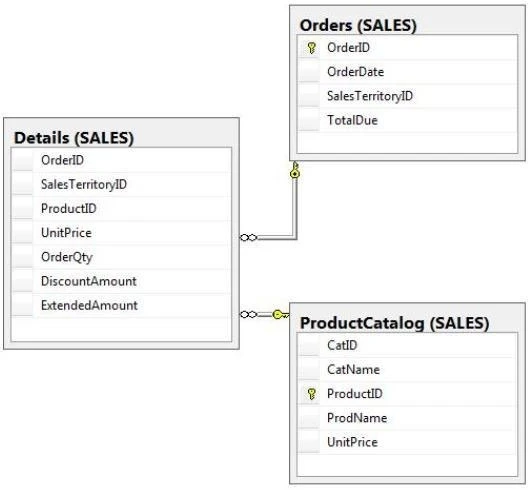You have a database that contains the tables shown in the exhibit. (Click the Exhibit button.)

You need to create a query that calculates the total sales of each OrderId from the Sales.Details table. The solution must meet the following requirements:
✑ Use one-part names to reference columns.
✑ Sort the order of the results from OrderId.
✑ NOT depend on the default schema of a user.
✑ Use an alias of TotalSales for the calculated ExtendedAmount.
✑ Display only the OrderId column and the calculated TotalSales column.
Which code segment should you use?
To answer, type the correct code in the answer area.